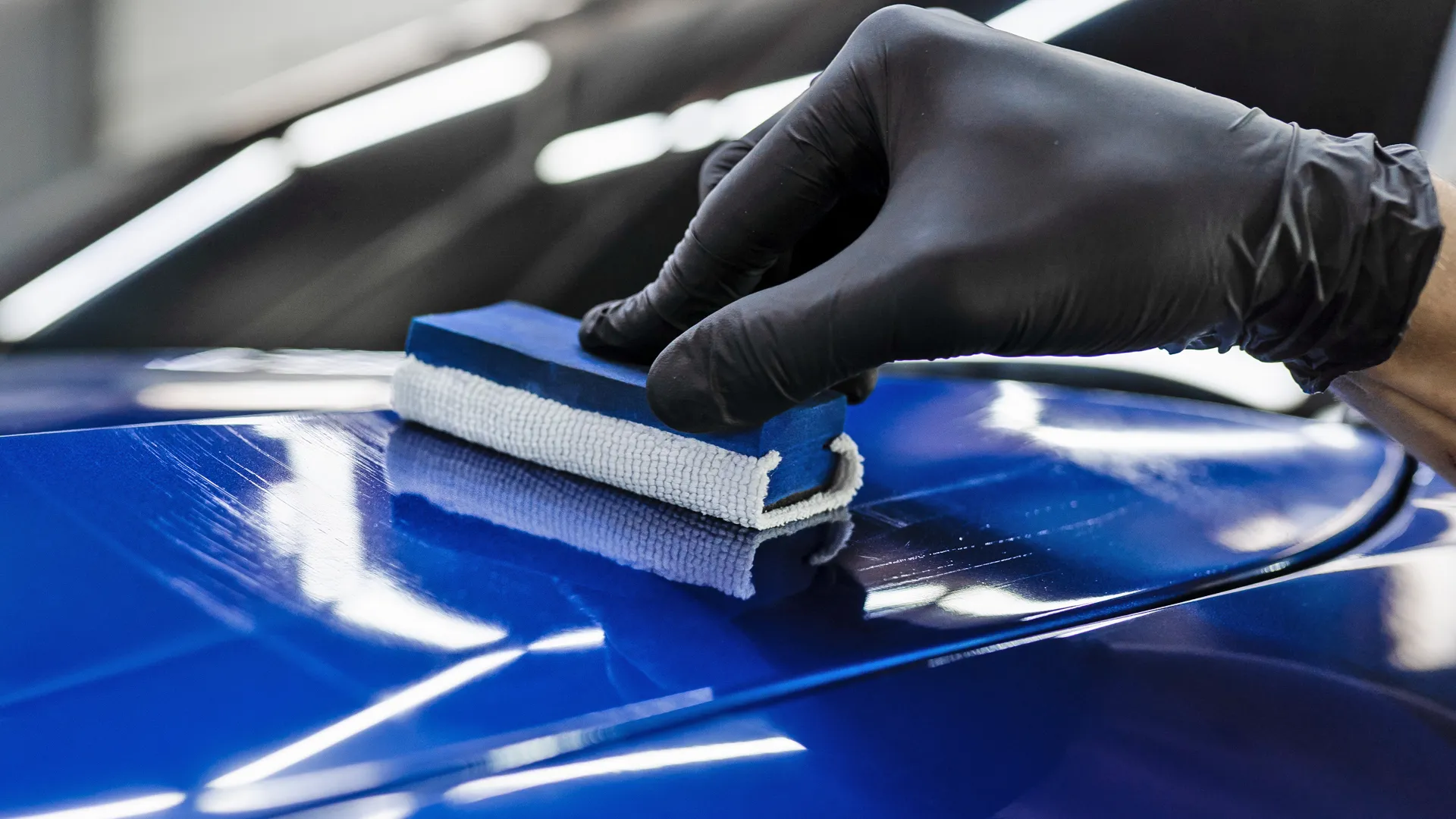A Comprehensive Overview to the Sorts Of Ceramic Coating on the marketplace
Ceramic coatings have arised as a crucial remedy across different industries due to their unique properties and applications. As we check out the distinctive characteristics and applications of these finishings, the effects for efficiency and durability become increasingly obvious, increasing inquiries concerning which kind might best suit your demands.
Comprehending Ceramic Coatings
Ceramic finishes are innovative safety services that have actually obtained popularity in numerous markets, specifically in automobile and aerospace applications. These coatings are composed of a liquid polymer that, when cured, forms a durable, hydrophobic layer externally of the substratum. This layer provides boosted resistance to ecological contaminants, UV radiation, and chemical exposure, therefore extending the life and visual allure of the underlying material.
The essential element of ceramic finishings is silica, which contributes to their solidity and toughness. The application process commonly includes surface area preparation, application of the finishing, and curing, which can be attained with heat or UV light. Once healed, ceramic finishings display outstanding bonding residential or commercial properties, enabling them to adhere highly to a variety of surface areas, consisting of metals, plastics, and glass.
Along with their protective attributes, ceramic finishings likewise offer ease of maintenance. Their hydrophobic nature reduces the adherence of dirt and crud, making cleansing less complex and less frequent. Generally, the adoption of ceramic finishes represents a considerable development in surface area security modern technology, providing both practical and aesthetic benefits across several fields.
Kinds of Ceramic Coatings
Numerous kinds of ceramic finishings are readily available, each designed to meet details performance needs and applications - Auto Detailing. The most usual kinds consist of:
Silica-based Coatings: These finishings largely include silicon dioxide and are understood for their sturdiness and chemical resistance. They are extensively utilized in auto and commercial applications.
Titanium Dioxide Coatings: Popular for their photocatalytic properties, titanium dioxide coverings are frequently applied in atmospheres where self-cleaning and antifungal properties are desirable, such as in structure products and automotive finishes.
Zirconia Coatings: Identified by their high-temperature security and thermal resistance, zirconia finishes are utilized in applications such as wind turbine engines and high-performance automotive parts.
Alumina Coatings: Exhibiting excellent solidity and thermal stability, alumina finishings are frequently utilized in wear-resistant applications, consisting of cutting tools and commercial machinery. - Paint Protection Film
Hybrid Coatings: Integrating the residential or commercial properties of numerous products, hybrid coatings use enhanced efficiency characteristics, making them suitable for special and demanding applications.
Each kind of ceramic finishing offers distinct functions, permitting individuals to choose the most ideal remedy based upon particular ecological conditions and performance demands.
Advantages of Ceramic Coatings
Coatings play a critical role in improving the efficiency and long life of surfaces across numerous sectors. Ceramic layers, in certain, offer many advantages that make them increasingly preferred amongst suppliers and consumers alike. Among the main advantages is their extraordinary toughness. These finishes are immune to scratches, chemicals, and UV rays, guaranteeing that the underlying surface stays safeguarded with time.
Along with toughness, ceramic coatings give excellent hydrophobic properties, enabling easy cleaning and upkeep. This water-repellent check out this site nature lessens the adherence of dirt, grime, and various other pollutants, which can lengthen the aesthetic charm and functionality of the surface area. Ceramic finishings can considerably boost thermal resistance, making them ideal for applications that endure high temperatures.

Application Process
When applying ceramic coatings, a thorough method is vital to achieve optimum results. The application procedure usually begins with complete surface prep work. This includes washing, decontaminating, and brightening the surface to eliminate all impurities, consisting of dust, oil, and prior waxes or sealers. A clean surface area makes certain proper attachment of the layer.
When the surface is prepped, the next action is to apply the ceramic finishing. This can be done making use of an applicator pad or a microfiber towel, guaranteeing also coverage. It is vital to function in small areas to preserve control and prevent premature curing. The covering should be applied in thin layers, as thicker applications can lead to uneven surfaces.
After application, the layer needs a certain curing time, usually varying from a few hours to a complete day, relying on the product. Throughout this time around, it is crucial to prevent direct exposure to dampness or pollutants. Ultimately, a mild buffing may be required after treating to improve the gloss and remove any kind of high places. Adhering to these steps faithfully will maximize the performance and long life of the ceramic finishing, providing a resilient protective layer for the surface area.
Maintenance and Long Life
To guarantee the durability and effectiveness of a ceramic finish, routine upkeep is essential. Ceramic layers, known for their resilience and protective top qualities, require particular care regimens to maximize their lifespan and performance. The primary step in upkeep includes routine washing with pH-neutral soap, preventing harsh chemicals that can deteriorate the layer. It is recommended to clean the vehicle on a regular basis, ideally every 2 weeks, to stop the buildup of pollutants that could compromise the coating's stability.
In enhancement to regular washing, periodic inspections are important. Search for indications of wear or damages, such as hydrophobic buildings diminishing or surface area flaws. If required, a light gloss might be used to renew the layer without stripping it away.
Additionally, the application of a booster spray can boost the covering's hydrophobic impacts and restore its gloss. This is particularly valuable for coatings that have actually been in use for an extended period. Eventually, by adhering to these upkeep techniques, one can significantly extend the life of a ceramic finishing, ensuring that it proceeds to provide optimum defense against ecological elements and preserve the visual appeal of the automobile.
Final thought
